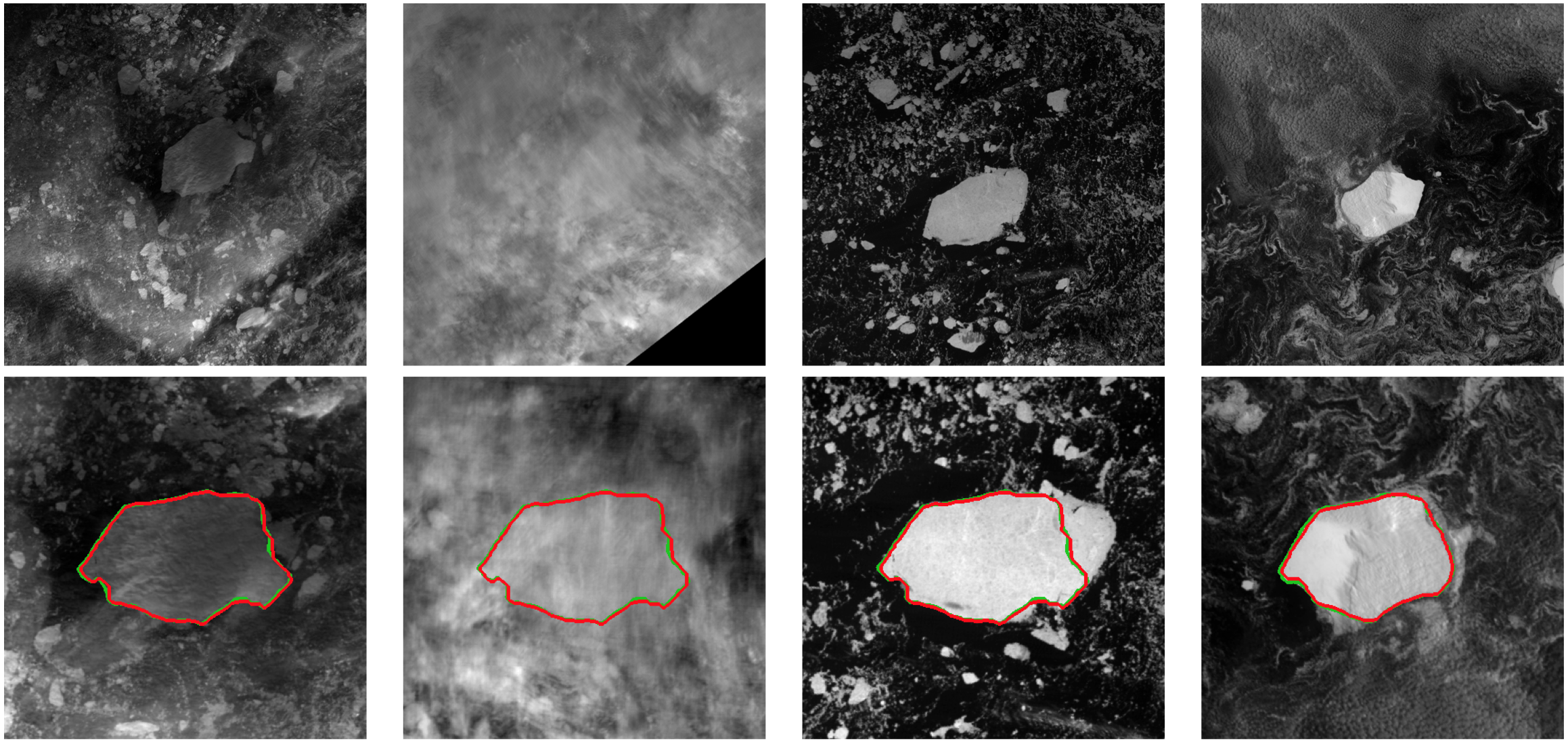Section: New Results
Enforcing Monotonous Shape Growth or Shrinkage in Video Segmentation
Participant : Guillaume Charpiat [contact] .
This work has been done in collaboration with Yuliya Tarabalka (Ayin team, Inria-SAM), Bjoern Menze (Technische Universität München, Germany), and Ludovic Brucker (NASA GSFC, USA) [http://www.nasa.gov ].
keywords: Video segmentation, graph cut, shape analysis, shape growth
The automatic segmentation of objects from video data is a difficult task, especially when image sequences are subject to low signal-to-noise ratio or low contrast between the intensities of neighboring structures. Such challenging data are acquired routinely, for example, in medical imaging or satellite remote sensing. While individual frames can be analyzed independently, temporal coherence in image sequences provides a lot of information not available for a single image. In this work, we focused on segmenting shapes that grow or shrink monotonically in time, from sequences of extremely noisy images.
We proposed a new method for the joint segmentation of monotonically growing or shrinking shapes in a time sequence of images with low signal-to-noise ratio [32] . The task of segmenting the image time series is expressed as an optimization problem using the spatio-temporal graph of pixels, in which we are able to impose the constraint of shape growth or shrinkage by introducing unidirectional infinite-weight links connecting pixels at the same spatial locations in successive image frames. The globally-optimal solution is computed with graph-cuts. The performance of the proposed method was validated on three applications: segmentation of melting sea ice floes; of growing burned areas from time series of 2D satellite images; and of a growing brain tumor from sequences of 3D medical scans. In the latter application, we imposed an additional inter-sequences inclusion constraint by adding directed infinite-weight links between pixels of dependent image structures. Figure 17 shows a multi-year sea ice floe segmentation result. The proposed method proved to be robust to high noise and low contrast, and to cope well with missing data. Moreover, in practice, its complexity was linear in the number of images.


